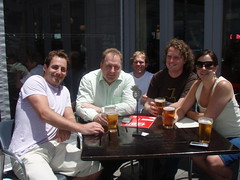I am sure you remember Michael Wesch’s brilliant The Web is Us/ing Us — I talked about one of the variants here. Well, he is back and bringing his digital ethnography skills to bear on the subject of the Information R/evolution. As Jon Burg points out, Michael Wesch raises some great points — in fact, the points that are raised in this four minute video could supply me with blogging topics for the next couple of weeks.
But one of the things that resonated with me was that "the future isn’t what you think". As the video shows, some years ago we were all fascinated by hierarchies of knowledge and categorisation. We were building taxonomies and information structures and file servers and places to store documents. But then along came Google and changed the way we played. Remember, Google changed the way that we played FIRST, and the way we worked SECOND. So despite the huge investment that we all made (professionally or personally) in collecting and categorising our web bookmarks, our corporate documents and intranet links, the future turned out to be a very different place.
This is why we use the term "disruptive" technology for those innovations that change the status quo. It is also why it is essential for us, as marketers, to continue to investigate and play with the technologies that become available … because what is clear (to me at least) is that consumers are more rapidly adopting the game-changing technologies that will infect and drive tomorrow’s corporate innovation. So while consumers are unlikely to tell us HOW to change what we do … by watching, understanding and playing where they play, we will at least be aware of the trends and opportunities coming down the track.







